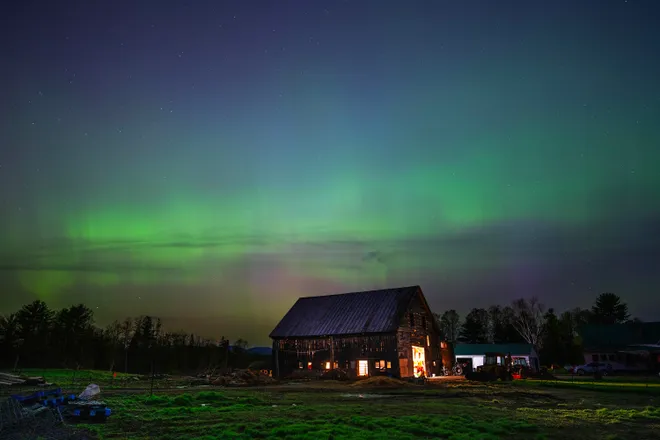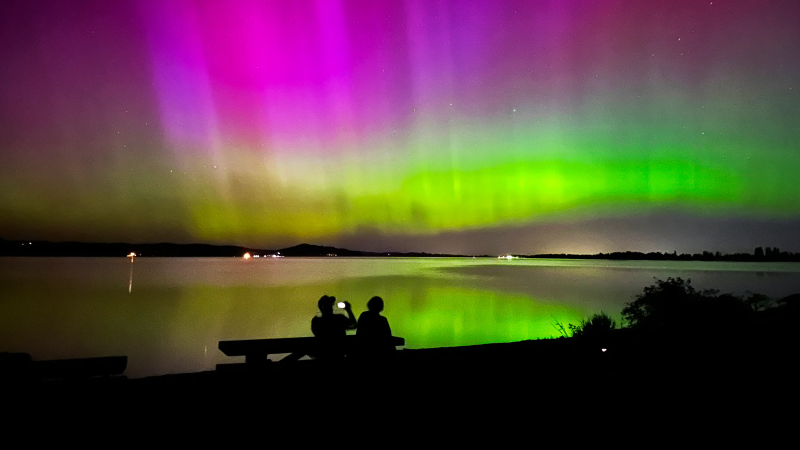Aurora borealis incoming? Solar storms fuel hopes for northern lights this week
The aurora borealis, or northern lights, might be visible this week across portions of the northern U.S., federal space weather forecasters said Monday, thanks to a period of strong solar activity over the weekend.
The National Oceanic and Atmospheric Administration's Space Weather Prediction Center has issued a G3 or "strong" geomagnetic storm watch for Tuesday.
If the predicted G3 conditions are reached, auroras could be visible across the far northern U.S. on both Monday and Tuesday nights, Space.com said. Prior geomagnetic storms of this level have triggered auroras as far south as Illinois and Oregon, according to NOAA.
By comparison, the May 10 geomagnetic storm that made the aurora visible across a wide stretch of the U.S. was rated a G5, the most extreme, and brought the northern lights to all 50 states.

What is the aurora borealis? How do the northern lights work?
Auroras are ribbons of light that weave across Earth's northern or southern polar regions, according to NASA. Geomagnetic storms that have been triggered by solar activity, such as solar flares or coronal mass ejections like those that occurred this weekend, cause them. The solar wind carries energetic charged particles from these events away from the sun.
These energized particles hit the atmosphere at 45 million mph and are redirected to the poles by the earth's magnetic field, according to Space.com, creating the light show.
During major geomagnetic storms, the auroras expand away from the poles and can be seen over some parts of the United States, according to NOAA.

What are solar cycles? What is the solar maximum?
The current level of heightened activity on the sun is because we are near the peak of the solar cycle.
Solar cycles track the activity level of the sun, our nearest star. A cycle is traditionally measured by the rise and fall in the number of sunspots, but it also coincides with increases in solar flares, coronal mass ejections, radio emissions and other forms of space weather.
The number of sunspots on the sun's surface changes on a fairly regular cycle, which scientists refer to as the sun's 11-year solar cycle. Sunspot activity, and hence auroral activity, tends to peak every 11 years.
Sunspots produce solar flares and coronal mass ejections, which create the geomagnetic storms here on Earth that cause the aurora to appear.
"We are entering the peak of Solar Cycle 25," Erica Grow Cei, a spokesperson for the National Weather Service, told USA TODAY recently.
"This period of heightened activity is expected to last into the first half of 2025," she said, meaning that additional chances for seeing the aurora will continue for at least the next year.
Contributing: Chad Murphy, USA TODAY Network
Disclaimer: The copyright of this article belongs to the original author. Reposting this article is solely for the purpose of information dissemination and does not constitute any investment advice. If there is any infringement, please contact us immediately. We will make corrections or deletions as necessary. Thank you.



